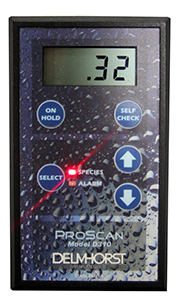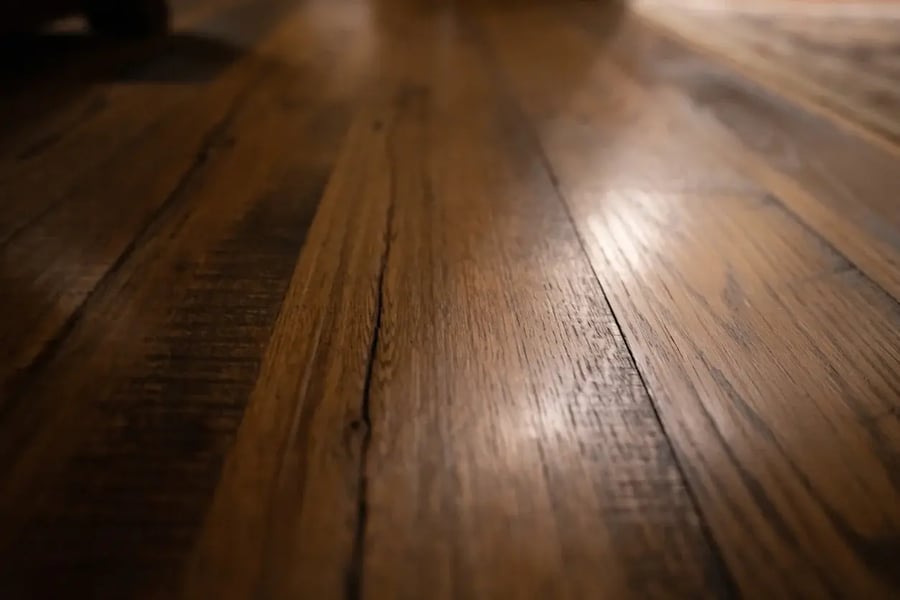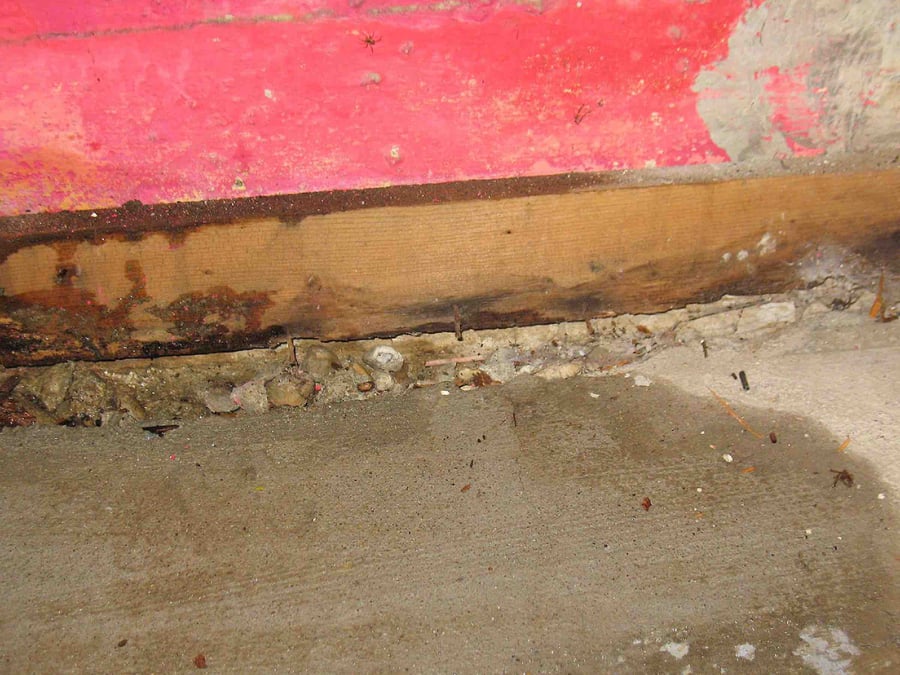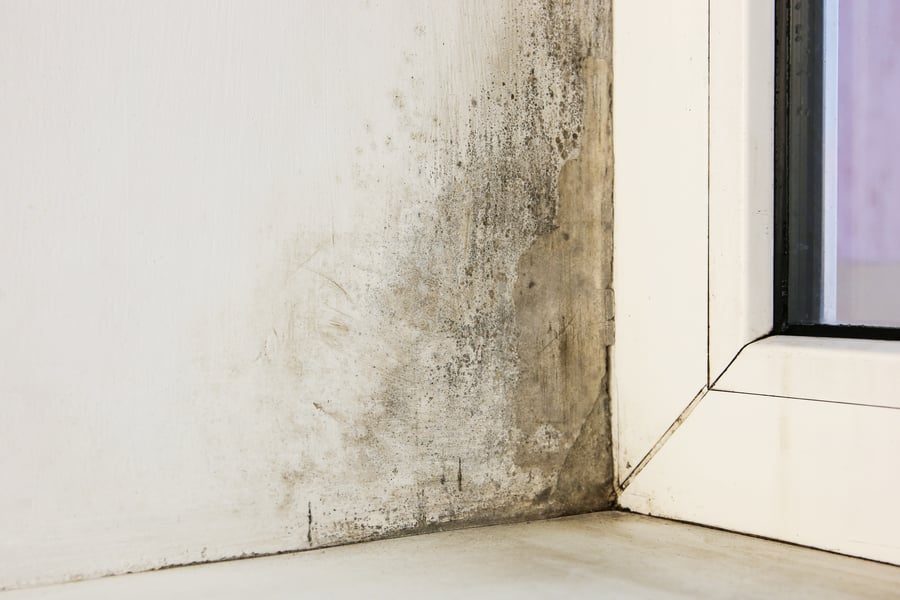The Best Times to Use Pin or Pinless Moisture Meters

 There are many situations where it may be necessary to test the moisture content (%MC) of something. And, when it comes to directly testing the moisture content of materials, there are two primary options—pin moisture meters and pinless moisture meters.
There are many situations where it may be necessary to test the moisture content (%MC) of something. And, when it comes to directly testing the moisture content of materials, there are two primary options—pin moisture meters and pinless moisture meters.
Pin moisture meters use the principle of electrical resistance to measure the amount of moisture in various materials. Since water is a conductor and materials such as wood, cotton, gypsum, and hay are resistors, the more easily electricity flows through the material, the wetter it is. For the sake of accuracy, it’s important to make sure the pin meter is calibrated for the particular material being tested—because different materials have a different inherent resistance to electrical current.
Pinless moisture meters, on the other hand, use electromagnetic radio frequencies to “scan” a sample of material for the presence of water. The fluctuations in the electromagnetic wave are used to measure the amount of water in the sample. Pinless moisture meter accuracy is affected by the specific gravity (SG) of the material being scanned, so the meter needs to be calibrated for that material’s SG value. Specific gravity is a measure of the relative density of a material compared to another material—typically water.
Both pin and pinless moisture meters have their own distinct advantages and disadvantages that may make them more or less useful for specific moisture testing situations. When should you use a pin moisture meter, and when should you use a pinless one? Here are a few broad situations where one type of moisture meter might be better than the other.
Testing Large, Flat Surfaces, Such as an Entire Floor
Pinless moisture meters excel at testing moisture for large areas of a structure quickly and efficiently. Simply push the scanning plate into the floor, take a reading, lift it up, and repeat the process in a different spot. The scanning plate checks a large area all at once and only takes a couple of seconds to make each check. This allows users to quickly scan very large areas of a structure with relative ease.
Pin-type moisture meters, on the other hand, can only check the small area between the contact pins for moisture. Additionally, they have to penetrate deep into the material being tested to get a comprehensive reading. This often means more force is required to penetrate tougher materials, increasing strain and risk of breaking the pins. The smaller testing area and extra effort both contribute to increasing the time and labor cost of measuring moisture in a large area.
Winner: Pinless Moisture Meters
Testing Moisture in Uneven Surfaces and Loose-Packed Materials
Pinless moisture meters require complete contact with a solid surface to provide the most accurate readings. Pinless moisture meter accuracy suffers if the scanning plate cannot be pressed completely flat against the material being tested. Also, if the material being scanned is loose-packed (such as for insulation or hay), the meter may end up testing the moisture content of the empty air between material fibers.
Pin-type moisture meters, on the other hand, can be easily used to test materials that are loose-packed or have an uneven surface. The thing that matters most is the flow of electricity in the material being tested—as long as there’s a path for the electricity to flow from one pin to the other, the testing can be completed. However, to test moisture deep in fiberglass insulation, hay bales, and the like, specialized electrodes may be necessary.
Winner: Pin Moisture Meters
Testing Moisture in Materials You Don’t Want to Damage
Pinless moisture meters are sometimes referred to as “non-invasive” or “non-destructive” moisture meters because they don’t have to penetrate the surface of the materials being tested to get accurate moisture content measurements. This is why many flooring specialists use pinless moisture meters to test their hardwood flooring for moisture. With a pinless meter, the moisture content can be assessed without having to damage the hardwood floor in the slightest.
Pin moisture meters, on the other hand, have to penetrate the surface of the material to conduct a proper test. In applications where the surface condition of the final product needs to be protected, leaving pinholes, even small ones that can be easily covered up or filled with epoxy, is often less than ideal.
Winner: Pinless Moisture Meters
Determining Distribution of Moisture Throughout a Board
When pinless moisture meters scan a material for moisture, they provide an average reading of all moisture throughout the area scanned. This means that, if a moisture pocket is detected, you won’t know how deep it is. Or, if the shell and core moisture of a material sample varies, you won’t have an idea of the difference.
Pin moisture meters—particularly those that use insulated pins—excel at determining the distribution of moisture in a board. With insulated pins, it’s possible to simply push the pins in a fraction of an inch, take a reading, push them in another fraction of an inch, take another reading, and keep repeating this process until the pins are all the way in. The distribution of moisture in a board can be priceless information for lumber distributors, as it helps them to determine how their lumber is curing so they can adjust kiln conditions accordingly.
Winner: Pin Moisture Meters
Other Considerations to Make When Choosing a Moisture Meter
Of course, there’s more to choosing a moisture meter than merely whether it uses a set of pins or a scanning plate (or both) to test moisture content in a material. You also need to consider:
- What moisture reading scales the meter has,
- What the moisture detection range of the meter is,
- Whether or not it can store readings for future reference,
- How accurate the meter is (and how easy it is to verify that accuracy),
- Whether the meter is an analog or digital moisture meter model, and
- How easy that moisture meter is to use.
Need help finding the perfect moisture meter to meet your moisture testing needs? Contact the experts at Delmhorst for advice!
Subscribe to Our Blog
Post Related

Delmhorst’s Pin and Pinless Moisture Meters for Construction and Building Industry


